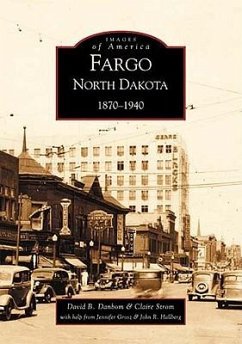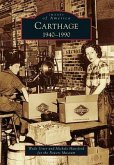Established in 1872 when the Northern Pacific crossed the Red River from Moorhead, Fargo quickly became an important town. The combination of the railroad and the wheat boom created a flourishing frontier city in the 1870s. The railroads brought goods into Fargo for sale, and established it as the area's major retail, wholesale, and service center. From 1880 to 1940 Fargo grew consistently with substantial immigration. Many of the early city leaders were Yankees from states such as Maine, Wisconsin, Minnesota, Iowa, and Illinois, as well as Canadians. European immigration before 1900 was predominantly from Scandinavia and Germany, but after 1900 it broadened to include other countries. These immigrants brought strong traditions with them that became evident in the religious and cultural life of the city.
Hinweis: Dieser Artikel kann nur an eine deutsche Lieferadresse ausgeliefert werden.
Hinweis: Dieser Artikel kann nur an eine deutsche Lieferadresse ausgeliefert werden.








